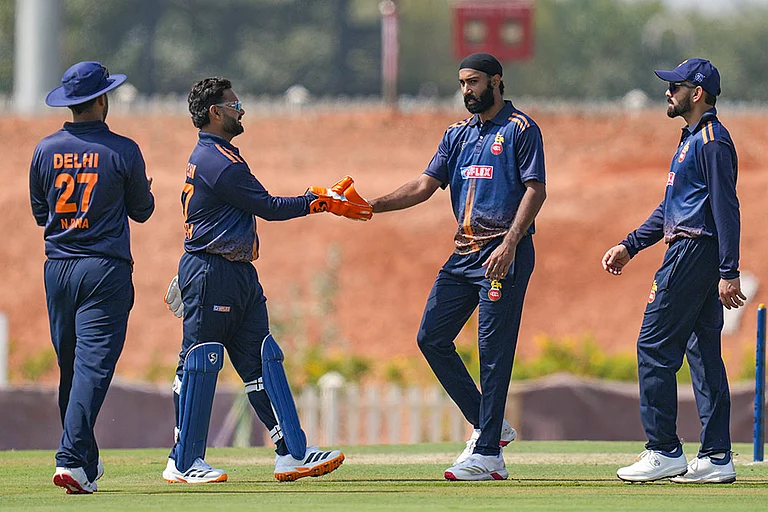One of the best kept secrets of Odisha are its picturesque waterfalls. The streams expand with the monsoon rains and the waterfalls roar down the hillsides, unleashing their fury. As the monsoon recedes, they become gentle flows. In winter, the lush green surroundings and the cascades attract a lot of picnickers.
Badaghagara
Tucked inside the forested hills of Odisha’s Kendujhar (Keonjhar) district, the Machha Kandana River jumps down from a height of 60 meters to form the Badaghagara waterfalls. The gurgling of the water can be heard from a distance as you walk up to the base of the waterfall. You can see the water flow out as a stream through the forest slopes. Located about three km upstream, is its twin, the Sanaghagara. You have to take the well-laid out path from the car park to reach this waterfalls. Do abide by the ‘no bathing’ warning. Both the places are popular with picnickers, especially during winter. The nearest town and railway station is Keonjhar, about 10km by road from Badaghagara and about 5km from Sanaghagara. The nearest transport hub is Rourkela, about 110km away by road.
Khandadhar
This can be a tad confusing when you have two different waterfalls with the same name, on either side of a hill. Here we are talking about the Khandadhar waterfalls that originates from the Korapani Nala and travels down 248 meters (800 feet) across a barren rock face. Known as the 12th highest in India, it is best reached through Bonaigarh town (less than 100km by road from Rourkela) in Sundergarh district. Although the cascades can be seen from far, people usually walk up two kilometres to a hill top to catch a panoramic view of the waterfalls and the verdant countryside. Young visitors often descend to the base of the waterfall, clambering across the boulders. But one has to be careful while negotiating the rocks.
There is another Kandhadhar waterfall, about 55km from Keonjhar town in Keonjhar district. This is a relatively narrow cascade falling through a height of 150 meter.
Pradhanpat
Located adjacent to Deogarh town in Odisha’s Deogarh district, Pradhanpat consists of dense forests spread across low rolling hills. The waterfall descends across a jagged rock wall to form a small pool at the bottom, before flowing out as a stream. Beware of monkeys. Sambalpur town, about 100km away, is the nearest road/rail hub.
From Deogarh town, one may also visit the lesser known Kurudukut waterfalls deep inside the forest. In winter, people come down for picnics in area.
Duduma
Also known as Matsya Tirtha, the Duduma waterfalls is near Odisha’s border with Chhattisgarh and Andhra Pradesh. Flowing through the tribal belt of Koraput district, the Machkund River jumps down through 175 meters as the Duduma waterfalls. It is also the lifeline of the Machkund Hydro Electric Project. The dam and power house at Onukudeli may be visited after obtaining permission from the Machkund police station. The nearest road and rail hub is Jeypore, about 70km by road from Duduma.
Barehipani
Simlipal National Park, located in Mayurbhanj district of Odisha, is one of India’s popular tiger reserve. But one may visit the park for its scenic beauty alone. The Budhabalang River flowing through the Meghashuni Hill cascades through a height of almost 400 meters. It jumps down over multiple tiers of rock face surrounded by thick forests. The nearest convenient gateway is Jashipur town, less than 100km by road. The nearest railhead and important town is Baripada (about 100km by road from Jashipur). Remember, Simlipal is a malaria-prone zone and utmost caution is required.
Also lying within the core area of the national park is the Joranda waterfalls. The cascade drops a sheer 150 metres, its water collecting noisily into a rock pool at the bottom of the slope before flowing out.
Getting there: Bhubaneswar, Odisha’s capital is connected with the rest of the country by air, road and rail. The road and railway network within Odisha is also quite good. But do remember, you have to travel to the countryside to reach the waterfalls, so road conditions may not always be ideal; also, may be you will be required walk a couple of kilometres to reach the waterfalls itself. Accommodation is basic in most places. Carrying drinking water, mosquito/insect repellents, and personal medicine must. For more details, contact: Odisha Tourism.





















